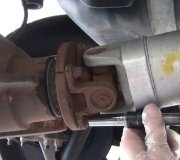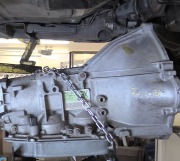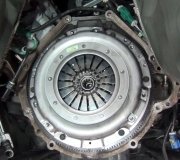Two different ways of doing the same thing, assuming of course it's actually what is leaking. I prefer the sealant myself. Cork or fiber gaskets work fine as long as you don't over-tighten the bolts. That will cut the gasket and cause a leak. Tightening the bolts with one hand on a 1/4" drive ratchet is plenty of force to do the job. Over time fluid will seep out through the gasket material. That wetness can be mistaken for a leak.
The sealers I used at the dealership take a little longer to use but they create a more effective seal. What you must watch though is even if you've had the pan off for hours, there will be transmission fluid dripping from the back edge of the transmission. Once you have all the old gasket material thoroughly cleaned off both surfaces, there must be no oil on them when you install the pan. If you use the black sealer, it absolutely will not bond and seal in any area there is a film of fluid. That will result in a leak. Every mechanic has his favorite trick to get that fluid to stop dripping just long enough to install the pan. (Put the bead of sealant on the pan, not the transmission where the fluid will run on it). If you're replacing the filter at the same time, once that is done, and you get the fluid to stop running down for 10 - 15 seconds, quickly slap the pan in place and start tightening the bolts. It's okay for fluid to run onto the sealant after it has made contact with transmission surface.
Use a rag and brake parts cleaner to clean the pan's sealing surface before you put the bead of sealer on it. Use that brake parts cleaner on the transmission too, then watch to be sure no transmission fluid runs onto the gasket surface before you get the pan in place. To address this concern, I'd recommend asking for the gray sealant instead of the black. It cures a little harder where the black stuff stays a little more rubbery, and it's just a fuzz harder to remove, but it will seal and bond through a light film of transmission fluid in case you overlook it. It's still a good idea to keep all sealing surfaces clean.
With either sealer, they take about 15 minutes to skin over but you can fill the transmission with fluid right away. It can take a couple of hours to fully cure. By that time you can be on the highway already.
Friday, July 1st, 2011 AT 9:42 PM



